低碳钛、钒微合金钢中的相间析出
贾 涛,魏 娇,冯 洁,张维娜,刘振宇,王国栋
(东北大学轧制技术及连轧自动化国家重点实验室,沈阳 110819)
低碳钛、钒微合金钢中的相间析出
贾 涛,魏 娇,冯 洁,张维娜,刘振宇,王国栋
(东北大学轧制技术及连轧自动化国家重点实验室,沈阳 110819)
针对目前较少关注的Ti-V微合金体系,在Formaster—FII膨胀仪上进行奥氏体/铁素体两相区等温,在铁素体相变同时获得Ti、V复合相间析出。采用金相、透射电子显微镜对显微组织、尤其是相间析出形貌、及其与铁素体基体的位向关系进行了观察与分析。研究表明,650℃为静态等温相变的鼻温点,相间析出呈层状分布,具有平面和曲面两种形貌,相间析出碳化物与铁素体基体之间存在Baker-Nutting取向关系。
Ti-V微合金钢;相间析出;等温相变;透射电子显微镜
1 前言
相较于传统的弥散析出,相间析出由于其显著的强化效应引起了国内外学者的广泛关注。2004年,日本钢铁控股工程公司(JFE钢铁公司)Funakawa等[1]研发了一种具有高扩孔性能的高强钢,微观组织为全铁素体和纳米相间析出物,计算表明纳米相间析出物的强化效果达到约300 MPa。在此之后,Nippon Steel[2]和台湾大学[3~8]进行了跟踪研究,着重于工艺技术开发、相间析出晶体结构和取向关系分析以及强化模型的研究。而相间析出的机制则在20世纪80年代得到了更多的关注,大致可归纳为两种[9]:a.Ledge机制,即相间析出发生在低能、半共格相界台阶的阶面;b.Bowing机制,即相间析出发生在高能、非共格界面,呈弯曲形貌。近年来,相间析出的研究已经逐渐覆盖 Ti[3~5,10]、Ti-Mo[1,4~7]、Nb[2,10~12]、Nb-Ti[4,5,13]、Nb-Ti-Mo[13]和 V[8,14~16]微合金体系,而复合相间析出因其更高的热稳定性获得了更多的关注。
本文选取还未得到大量关注的Ti-V微合金体系,通过简单的等温热处理工艺获得Ti、V复合相间析出,采用金相(OM)与透射电子显微镜(TEM)对其进行了初步的分析与讨论。
2 实验方法
实验钢为真空感应炉熔炼,采用低碳Ti、V微合金化路线,化学成分如表1所示。铸坯先经锻造开坯得到80 mm×80 mm的方坯,加热至1 200oC保温2 h,并连续轧制成6 mm厚钢板,然后加工得到ϕ3 mm×10mm的圆柱试样。热处理实验在Formaster-FII膨胀仪上进行,工艺如图1所示。

表1 实验钢化学成分Table 1 Chemistry of the investigated steel
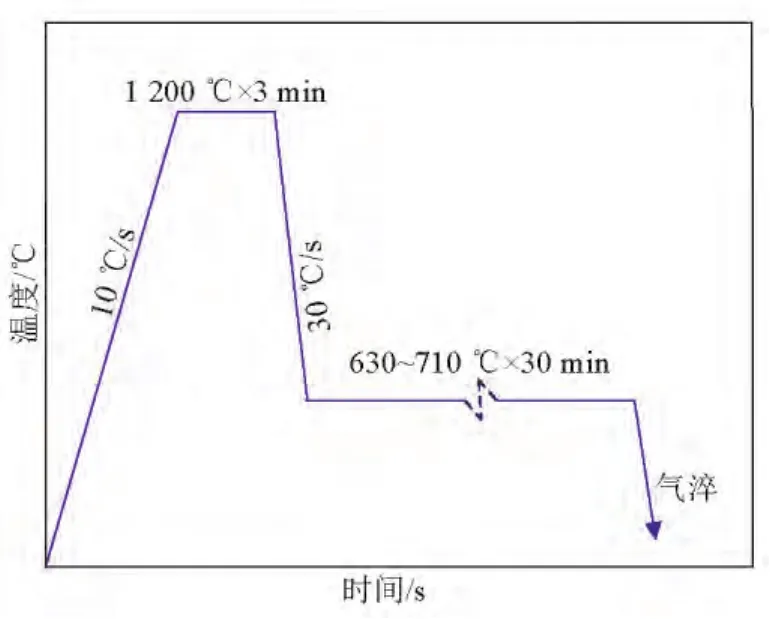
图1 热处理工艺流程图Fig.1 Schematic diagram showing the thermal treatment
先将试样以10℃/s加热至1 200oC,保温3 min,然后以30℃/s快冷至630~710℃等温30 min,发生奥氏体向铁素体的相变,最后采用He气淬火至室温。热处理后的试样经线切割制成金相试样,经打磨、抛光后用4%的硝酸酒精溶液腐蚀,通过LeicaQ550IW光学显微镜观察其金相组织。将膨胀仪试样沿横截面切出厚度约为300 mm、直径为3 mm的圆片,机械研磨至50 mm以下,然后采用Tenu-Pol—5型电解双喷减薄仪进行试样减薄,电解液为9%的高氯酸酒精溶液,双喷电压为15~20 V,温度为-20℃,采用FEI TECNAI G2F20场发射TEM观察试样中的相间析出。
3 实验结果
图2是热膨胀时间曲线图,由于膨胀仪量程的限制,在实验中将膨胀量起点设置为-0.06 mm。可以看出,等温铁素体相变满足“C”曲线规律,即随着相变温度的降低,由于相变驱动力的增大加快了铁素体相变速率,继续降低相变温度,由于碳扩散速率的降低导致相变速率降低。
图3为试样分别在630℃、650℃、670℃、690℃和710℃下等温30 min后的金相组织,图中白色的为铁素体,黑色为等温后未转变奥氏体淬火形成的马氏体。铁素体份数随温度的降低先增加后减少,在650℃时获得了最大的铁素体份数,这与图2中的膨胀曲线相互印证。图3c和图3d清楚的表明,铁素体首先在奥氏体晶界形核,向晶内生长。
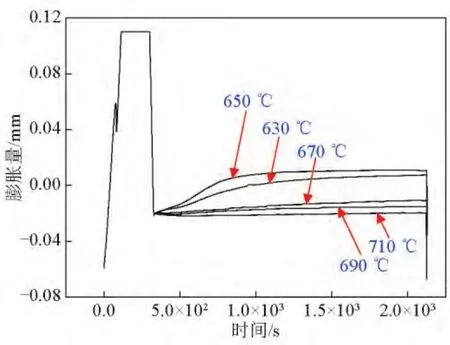
图2 在630~710℃下等温30 min的热膨胀时间曲线Fig.2 Dilation curve of the specimen isothermally transformed at 630~710℃ for 30 min
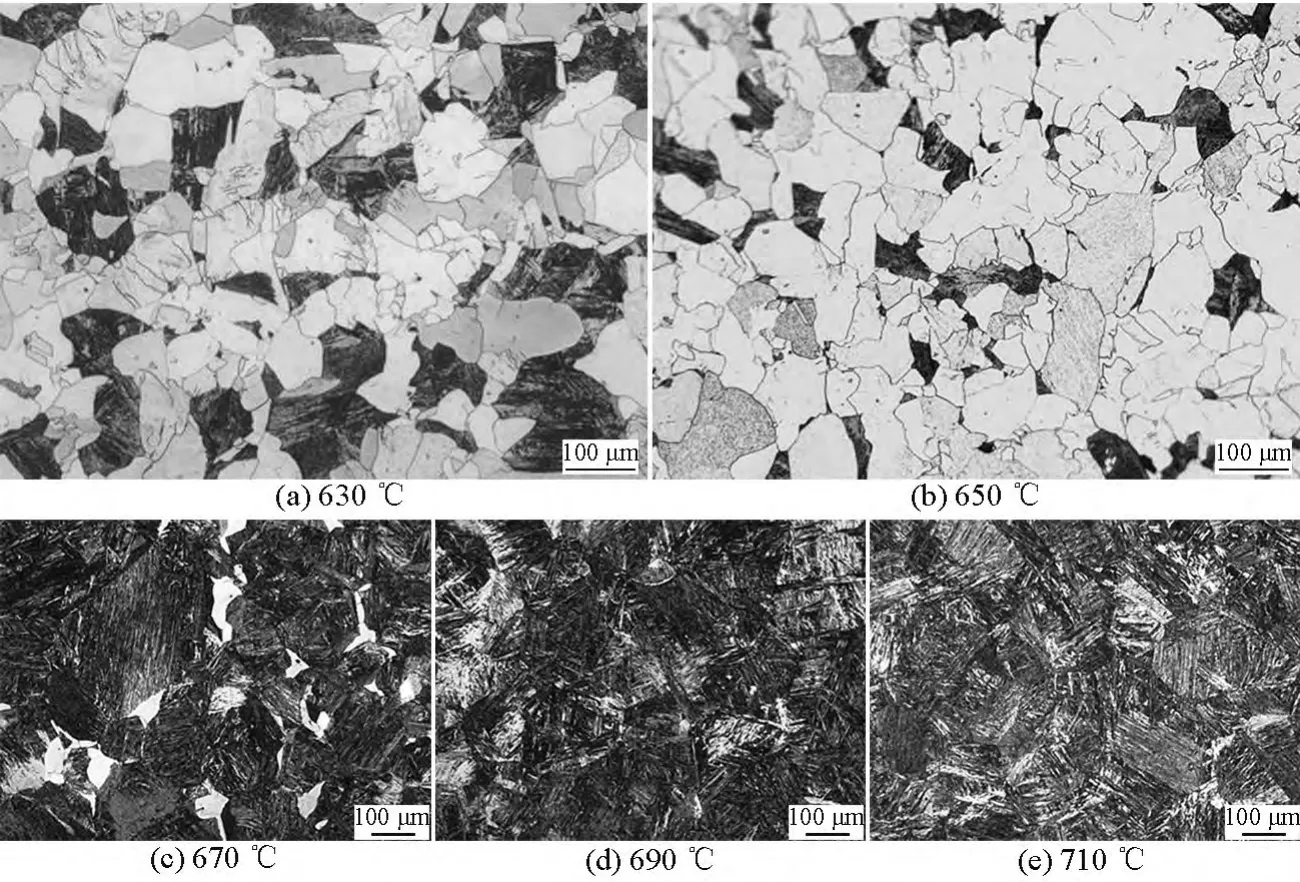
图3 在630℃、650℃、670℃、690℃和710℃等温30 min后的金相组织Fig.3 Optical micrograph after 30 min isothermal treatment at 630℃、650℃、670℃、690℃and 710℃
图4为630℃和650℃等温30 min后获得的相间析出TEM形貌照片,析出物呈规则的直线和曲线两种排列方式,而相间析出实际上是以层状形式排列,通过在TEM下选取某一些晶带轴,均可以在二维空间中呈现如图4中的链式结构。显而易见,在相同的等温时间下,630℃等温获得的相间析出更细小,层间距也更小。

图4 在630℃和650℃等温30 min后获得相间析出的不同TEM形貌照片Fig.4 TEM image of the specimen isothermally treated at 630℃and 650℃for 30 min showing different morphology of interphase precipitation

4 分析与讨论
4.1 相间析出层间距
在相变过程中,与铁素体的B-N位向关系、相界面的能量优势以及相界面提供的快速扩散通道,均为相间析出的大量、快速形核提供了有利条件。与奥氏体或铁素体基体中的析出相比,相间析出较大的密度、体积份数是其显著强化效应的本质原因。根据Yen等[7]推导的相间析出强化模型,除了析出物的尺寸和析出层与滑移面夹角之外,析出层间距和层内析出物间距是决定强化增量的决定性参数。在析出层间距的分析中,Bhadeshia[17]提出如下公式来描述半共格相界面条件下的最小析出层间距:式(1)中,σ和Δ分别为界面能和单位体积奥氏体转变为铁素体的相变驱动力,即析出层间距与相变驱动力呈反比。从图4可以看出,与650℃等温相比较,630℃等温相变驱动力更大,因此获得了更小的相间析出层间距。
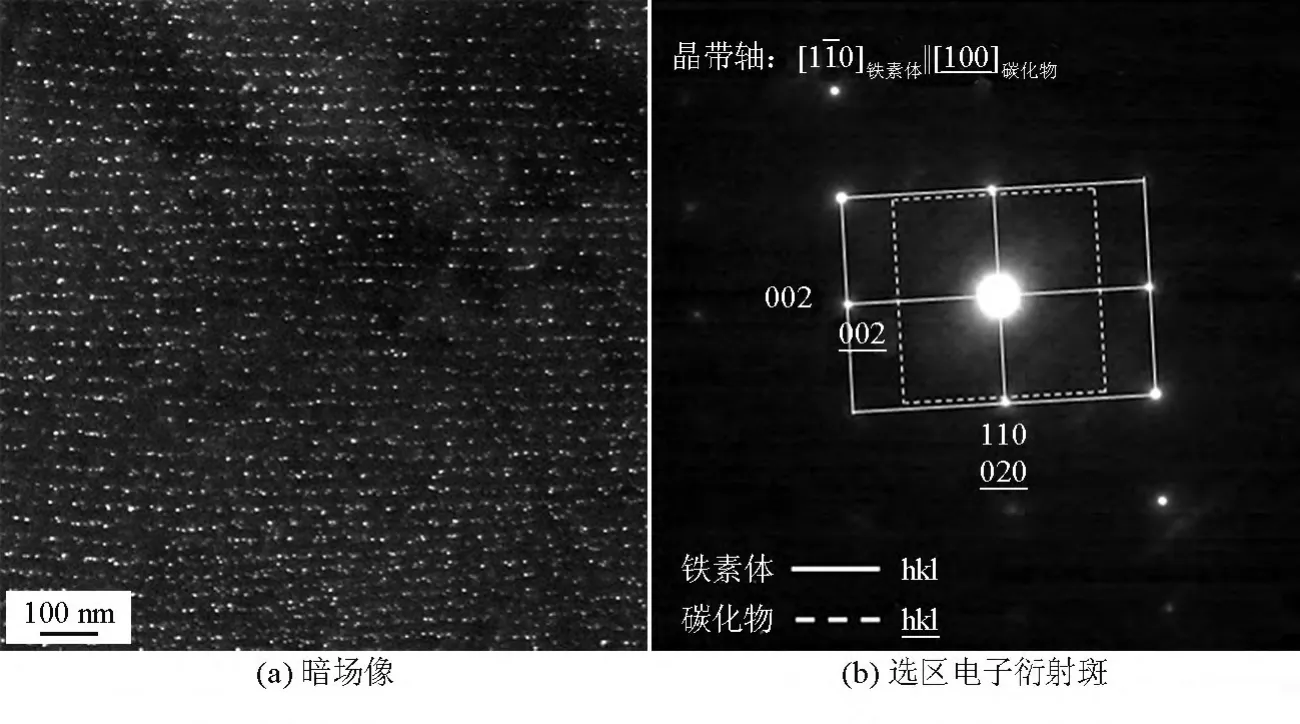
图5 在630℃等温30 min后获得相间析出的TEM像Fig.5 TEM image showing the interphase precipitates taken from specimen isothermally treated at 630℃for 30 min
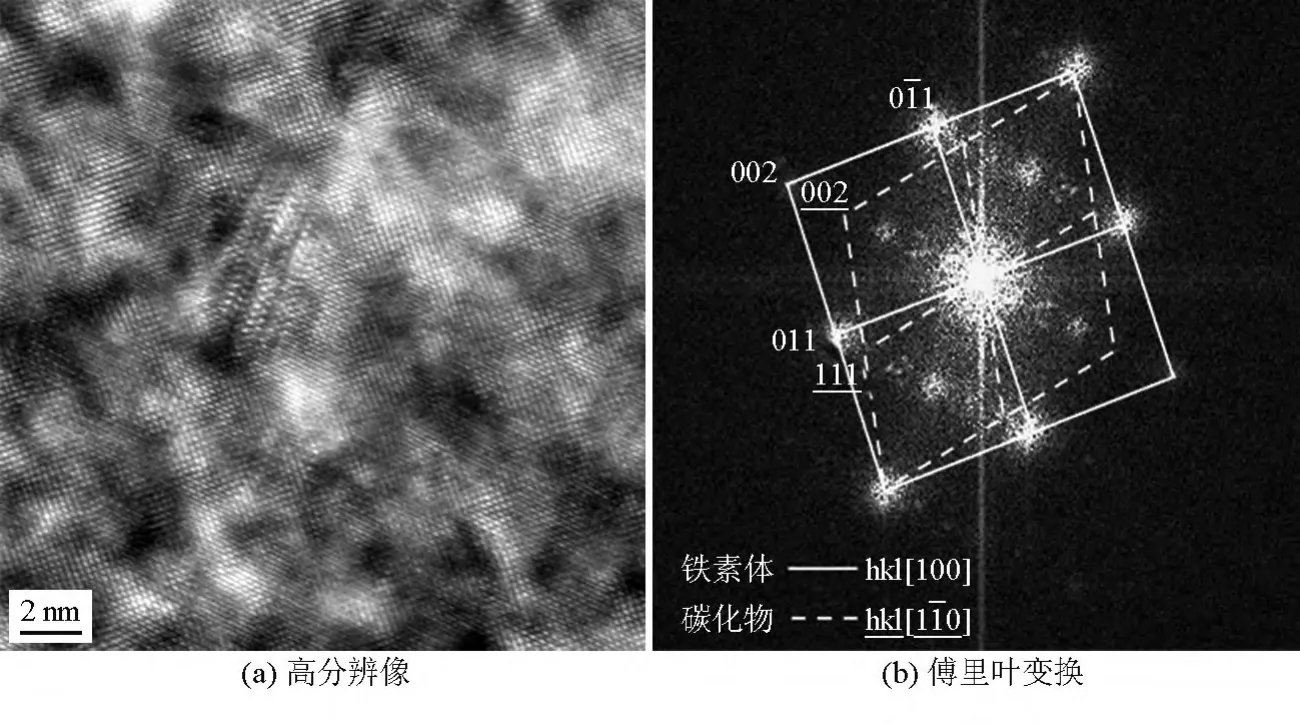
图6 在630℃等温30 min后获得相间析出的高分辨像Fig.6 High resolution TEM image of interphase precipitates taken from specimen isothermally treated at 630℃for 30 min

4.2 相间析出与铁素体的位向关系
当析出发生在铁素体基体时,碳化物与铁素体间位向关系将包括B-N取向关系的所有3个变体,而Honeycombe等[18]的研究表明,NaCl型的相间析出碳化物与铁素体基体只可能采取B-N取向关系中的一个变体。这在本文的实验结果中也得到了验证,见图5b和图6b。但在TiC相间析出的研究中,Yen等[3]观察到随着析出物的粗化,它与铁素体之间由B-N转变为Nishiyama-Wassermann(N-W)位向关系,即相间析出在粗化过程中晶格发生了转动。因此,碳化物与铁素体的位向关系不能作为相间析出判断的唯一依据,必须结合TEM的形貌像。
5 结语
1)针对一种低碳Ti-V微合金钢,通过两相区等温发生奥氏体向铁素体相变,在铁素体基体上获得大量规则的、层状排列的相间析出碳化物。
2)在所有实验条件下,650℃等温获得的铁素体份数最大,即该温度为静态等温相变的鼻温点。
3)相间析出层间距与相变驱动力呈反比,即等温相变温度越低析出层间距越小。

[1]Funakawa Y,Shiozaki T,Tomita K,et al.Development of high strength hot-rolled sheet steel consisting of ferrite and nanometersized carbides[J].ISIJ International,2004,44(11):1945-1951.
[2]Okamoto R.Interphase precipitation in niobium-microalloyed steels[J].Acta Materialia,2010,58(14):4783-4790.
[3]Yen Hung Wei,Chen C Y,Wang T Y,et al.Orientation relationship transition of nanometer sized interphase precipitated TiC carbides in Ti bearing steel[J].Materials Science and Technology,2010,26(4):421-430.
[4]Chen C Y,Yen Hung Wei,Kao F H,et al.Precipitation hardening of high-strength low-alloy steels by nanometer-sized carbides[J].MaterialsScienceandEngineering,2009,499A:162-166.
[5]Yen Hung Wei,Huang Ching Yuan,Yang Jer Ren.The nano-carbide control:Design of super ferrite in steels[J].Advanced Materials Research,2010,89-91:663-668.
[6]Yen Hung Wei,Huang Ching Yuan,Yang Jer Ren.Characterization of interphase-precipitated nanometer-sized carbides in a Ti-Mo-bearing steel[J].Scripta Materialia,2009,61:616-619.
[7]Yen Hung Wei,Chen Po Yu,Huang Ching Yuan,et al.Interphase precipitation of nanometer-sized carbides in a titanium-molybdenum-bearing low-carbon steel[J].Acta Materialia,2011,59(16):6264-6274.
[8]Chen Meng Yang,Yen Hung Wei,Yang Jer Ren.The transition from interphase-precipitated carbides to fibrous carbides in a vanadium-containing medium carbon steel[J].Scripta Materialia,2013,68:829-832.
[9]Honeycombe R W K.Some aspects of micro-alloying[J].Transaction of the Japan Institute of Metals,1983,24(4):177-189.
[10]Funakawa Y,Seto K ,Nakamichi H.Strengthening of ferritic steel by interface precipitated carbides in rows[J].Materials Science Forum,2010,638-642:3218-3223.
[11]Sakuma T,Honeycombe R W K.Microstructures of isothermally transformed Fe-Nb-C alloys[J].Metal Science,1984,18(9):449-454.
[12]Sakuma T,Honeycombe R W K.Effect of manganese on microstructure of an isothermally transformed Fe-Nb-C alloy[J].Materials Science and Technology,1985,1(5):351-356.
[13]Jang J H,Heo Y U,Lee C H,et al.Interphase precipitation in Ti-Nb and Ti-Nb-Mo bearing steel[J].Materials Science and Technology,2013,29(3):309-313.
[14]Davenport A T,Honeycombe R W K.Precipitation of carbides at g/a boundaries in alloy steels[J].Proceedings of the Royal Society of London A,1971,322:191-205.
[15]Balliger N K,Honeycombe R W K.The effect of nitrogen on precipitation and transformation kinetics in vanadium steels[J].Metallurgical Transactions A,1980,11A:421-429.
[16]Law N C,Parsons S A,Howell P R,et al.Crystallography of carbide precipitation at transformation interfaces during austenite decomposition in a low alloy steel[J].Materials Science and Technology,1987,3:642-648.
[17]Bhadeshia H K D H.Diffusional transformations:A theory for the formation of superledges[J].Physica Status Solid A-Applied Research,1982,69(2):745-750.
[18]Honeycombe R W K.Transformation from austenite in alloy steels[J].Metallurgical Transactions A,1976,7A:915-936.
Interphase precipitation in low carbon Ti-V microalloyed steels
Jia Tao,Wei Jiao,Feng Jie,Zhang Weina,Liu Zhenyu,Wang Guodong
(The State Key Laboratory of Rolling and Automation,Northeastern University,Shenyang 110819,China)
The present study focuses on the Ti-V microalloying system which draws less attention.By using the Formaster-FII dilatometer,the sample was held at austenite/ferrite dual-phase temperature region and the Ti-V complex interphase precipitates were obtained during the austenite to ferrite transformation.Optical Microscopy(OM)and transmission electron microscopy(TEM)were employed to analyze the microstructure,especially the morphology of the interphase precipitate and its crystallographic orientation relationship with ferrite matrix.Studies show that 650℃is the nose temperature for static isothermal transformation.The interphase precipitates exhibit sheet-like distribution,including flat and curved sheets and adopt Baker-Nutting orientation relationships with the ferrite matrix.
Ti-V microalloyed steel;interphase precipitation;isothermal phase transformation;TEM
TG142.01
A
1009-1742(2014)01-0088-05
2013-10-09
国家自然科学基金资助项目(51204048);中央高校基本科研业务费项目(N120407008);辽宁省教育厅一般项目(L2013112)
贾 涛,1981年出生,男,四川达州市人,讲师,研究方向为钢铁材料中的相变与析出动力学、组织性能关系、热轧板带表面氧化铁皮结构及缺陷控制等;E-mail:jiatao@ral.neu.edu.cn

